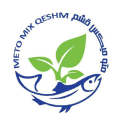The effect of fish and spirulina algae on plants
Introduction:
The role and importance of fertilization are well known. It is one of the principles of agriculture and horticulture and will play a valuable role in increasing the yield and quality of products. But sometimes, despite the use of fertilizer, no effect is observed on the crops. If you are looking for a suitable answer and effective fertilization, stay with Metomix Qeshm until the end.
Understanding the reasons for not getting results from fertilization
- When the desired results are not achieved after fertilization, we must definitely look for the reasons. These reasons can be traced back to various factors. There may be one reason alone or several reasons that make fertilization ineffective.
- Each plant has its own nutritional needs, and the appropriate fertilizer for each plant should be used for fertilization.
- Using poor quality and inferior fertilizers is one of the most common reasons for ineffectiveness. Using these fertilizers does not provide the plant with any nutrients and can even cause serious problems for the plant.
- There are times when farmers use standard, high-quality fertilizers but do not choose the right time to apply them, which reduces the effectiveness of the fertilizers.
- In many cases, insufficient organic matter infiltration into the soil limits the activity of microorganisms, which causes problems with the decomposition and release of nutrients.
The impact of fertilizer quality and type on yield
Choosing a fertilizer that matches the plant’s nutritional needs and soil characteristics can make a significant difference in crop growth and yield. High-quality fertilizers provide essential elements such as nitrogen, phosphorus, and potassium and are formulated so that the plant can easily absorb these substances. However, low-quality fertilizers may not only have no effect on plant nutrition, but in some cases can damage the soil or plant.
Many cases of mistakes and problems related to the timing and method of fertilization
- Applying fertilizer at the wrong time, such as during seasons when the plant is not actively growing.
- Fertilizing before heavy rainfall, which can lead to nutrient leaching.
- Applying fertilizer without considering the plant’s nutritional needs.
- Not applying fertilizer evenly throughout the land or garden, which disrupts the nutritional balance of plants.
- Excessive use of fertilizer, which may lead to plant burn or salt accumulation in the soil.
- Surface fertilization for plants that need to be fed deep.
- Fertilizing when soil conditions are not at all suitable, such as very dry or very wet soils.
Environmental factors affecting fertilizer performance
One of the most important environmental factors is the condition of the soil, i.e. if the soil type, pH and organic matter content are low, the fertilizer cannot work properly. Soil moisture and rainfall Fertilizers need water to dissolve and be absorbed, but too much water can leach nutrients and ultimately waste them. On the other hand, if the soil is dry, there is no water to carry these nutrients to the roots.
The ambient temperature of soil microorganisms is highly dependent on the ambient temperature for proper activity. If the ambient temperature is low, the elements in the soil will not be absorbed. On the other hand, if the air temperature is high, some fertilizers will evaporate and disappear instead of being absorbed, especially if you use nitrogen fertilizers.
Sunlight radiation: Plants need sufficient light for photosynthesis, but if this light does not reach the plant sufficiently, it will not be able to properly absorb nutrients from the soil. In general, soil conditions, temperature, humidity, and sunlight are among the factors that can affect how a plant absorbs and uses nutrients. No matter how much fertilizers are made to enhance plant nutrition, if they are used in unhealthy environmental conditions, they can have a negative effect and cause losses.
Humic acid and its effect on better absorption of fertilizers
An excellent and valuable compound that can be used alongside various fertilizers and improve their absorption is humic acid. Humic acid increases land productivity, prevents the loss of soil nutrients, improves soil performance, and reduces the impact of environmental stresses on plants.
Conclusion:
With a very precise and complete understanding of how to choose fertilizer and use it correctly, proper fertilization can be carried out Since fertilization is one of the most important stages of agriculture and horticulture, it will have a direct impact on the growth and development of leaves and the creation of quality products.
Metomix Qeshm is a product of Fanavar Company, a member of the Persian Gulf Science and Technology Park, and is the symbol of Qeshm. It produces high-quality organic agricultural fertilizers based on modern science and using the best and richest raw materials, and proudly markets them as an Iranian product. Farmers can contact the company’s experts and get information about the differences and functions of these products and place their orders. Our goal is a green and prosperous Iran. Join us on this journey with Metomix Qeshm.


